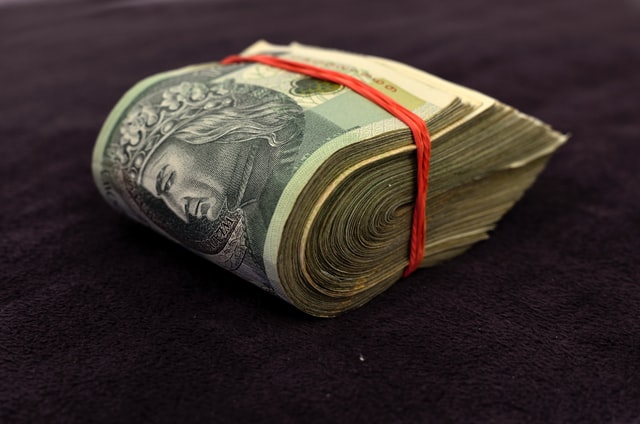Last week, two exposure drafts related to cosmetics supervision were issued: 1) on March 30, the General Department of the State Food and Drug Administration issued a public announcement to solicit opinions on the inspection points and judgment principles of cosmetics production quality management norms (Exposure Draft), with a total of 106 inspection points, clarifying the scope of application, inspection classification and judgment principles of inspection points of cosmetics production quality management norms. 2) On March 31, China Institute for food and drug control issued a notice to solicit opinions on the draft of the technical specifications for the safety of cosmetics (2022 Edition), closely following the new regulations. The contents of physical and chemical test methods, microbiological test methods, toxicological test methods, human safety test methods and efficacy evaluation test methods were deleted, combed, integrated and corrected, with a total of 232 items.
Market review: textile and garment sector: last week (March 28 to April 1, 2022), the Shanghai Composite Index, Shenzhen Component Index and Shanghai Shenzhen 300 index increased by + 2.19%, + 1.29% and + 2.43% respectively. The textile and garment sector fell 0.34%, ranking 25th among 31 Shenwan industries; Among them, the textile manufacturing sector fell 0.98%, and the clothing and home textile sector rose 0.01%. In the past month (from March 2, 2022 to April 1, 2022), the Shanghai Composite Index, Shenzhen Component Index and Shanghai Shenzhen 300 index increased by - 5.91%, - 9.35% and - 7.44% respectively, and the textile and garment sector fell by 7.07%, ranking 15th among the 31 Shenwan industries.
Cosmetics sector: the cosmetics sector rose 7.15% last week, outperforming the CSI 300 index by 4.71 PCT. The cosmetics sector rose 10.13% in the past month, outperforming the Shanghai and Shenzhen 300 index by 17.57pct. Compared with 31 industries of shenwanyi level, the cosmetics sector ranked second in growth in the past week and second in growth in the past month.
Industry news: the sales volume of American fashion retail group pvh21 / 22 increased by 26% year-on-year; Lululemon's revenue in fiscal year 2021 increased by 42% year-on-year; INDITEX, Zara's parent company, will raise prices to ease cost pressure; April fan, former executive director of Morgan Stanley, served as CFO of huaxizi; Affected by the rising price of crude oil and the repeated epidemic, the price of cosmetic raw materials outside China has ushered in a rising tide; Efficacy skin care brand baizhicui officially announced that Professor Li Yuanhong, a dermatologist, served as the chief product officer.
Investment suggestions: 1) textile and garment industry: in terms of downstream clothing brands, the epidemic has shown a multi-point distribution trend since March, especially in high-speed cities represented by Shanghai and Shenzhen, which are obviously affected by the epidemic. It is expected that the short-term offline passenger flow will resume under pressure. In addition, the online receiving and dispatching logistics will also be affected to some extent, and the clothing consumption as one of the optional categories still needs to recover. Recently, it has entered the performance window period of the first quarterly report of the annual report. In terms of downstream brand clothing, it is expected that most of the first quarterly reports will be affected by the epidemic, there is pressure on growth, and the upstream textile manufacturing is expected to be relatively superior. We continue to suggest that from the perspective of sound defense, we should pay attention to the related targets of undervalued and high dividend yield in the field of textile and clothing (see the attached table for details). In terms of stock targets, Anta sports, Li Ning and Tebu international, which have long recommended domestic sportswear leaders and whose valuation has been adjusted back to better buying points; In the field of non sportswear, it is believed that the high-end category has strong consumption toughness, and it is recommended to pay attention to the leaders of undervalued sub categories, including the leader of medium and high-end home textile Luolai Lifestyle Technology Co.Ltd(002293) , the brand of high-end sports fashion Biem.L.Fdlkk Garment Co.Ltd(002832) , Baoxiniao Holding Co.Ltd(002154) (it owns hazzys, a sports fashion brand). In terms of textile manufacturing, the performance in the past 21 years has gradually become clear. For a long time, we continue to recommend Huali Industrial Group Company Limited(300979) , Shenzhou International, which has a solid position as a high-quality head manufacturer and continues to expand production to promote steady growth.
2) cosmetics industry: the cosmetics industry maintains the previous view. The environment of intensified industry competition, increased layout of international brands and fine differentiation of consumer demand still exists. The industry supervision is further strict, and continue to pay attention to the shaping and continuous breakthrough of Chinese brands in the product power of the core competitive elements. We maintain the previous view and continue to recommend Proya Cosmetics Co.Ltd(603605) and other sensitive skin care leaders Yunnan Botanee Bio-Technology Group Co.Ltd(300957) , which actively improve the product power, have strong operation ability, have formed a clear strategic layout of multiple large single product series, multiple categories and multiple brands, have high performance growth, have a solid position as subdivided leaders, actively expand new categories and effects, and actively increase brand investment to enhance influence.
Risk tip: the macroeconomic growth rate is down, and the terminal consumption is weak due to repeated epidemics or extreme weather, which affects the consumption demand of clothing, cosmetics and other products; The intensification of industry competition and the price war of foreign leading brands will have an adverse impact on China's benchmark brands; E-commerce platform traffic growth slowed down and traffic costs increased.
